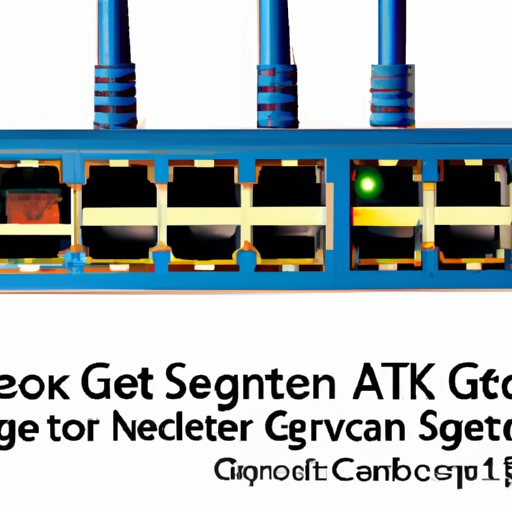GeeksforGeeks, a renowned computer science portal, serves as a comprehensive resource for passionate geeks seeking to broaden their knowledge. From data structures and algorithms to system design and programming languages, this platform offers a wide range of tutorials, articles, and learning materials. It caters to diverse needs, offering interview preparation materials, curated problem lists, cheat sheets, and even courses designed for professionals, students, and school-goers. Supporting various programming languages such as C, C++, Java, Python, JavaScript, and PHP, GeeksforGeeks also provides learning materials for subjects like mathematics, operating systems, DBMS, computer networks, and software engineering. Not stopping there, it has dedicated sections for machine learning, data science, web development, and DevOps, making it a one-stop destination for geeks across different domains. Additionally, GeeksforGeeks equips users with resources for exam preparation, including GATE, UGC NET, and banking exams. Embark on a remarkable journey of learning and exploring the realm of coding and computer science through this invaluable platform.
Computer Networks Simplified: GeeksforGeeks
Computer networks are an essential aspect of modern technology, enabling the seamless exchange of information between devices and facilitating efficient communication. From simple local area networks to complex global networks like the Internet, computer networks play a crucial role in our daily lives. In this comprehensive article, we will explore the fundamentals of computer networks, including the various networking concepts, types of networks, network topologies, network protocols, network devices, network security, and network troubleshooting.
Introduction to Computer Networks
Definition of Computer Networks
A computer network is a collection of interconnected devices, such as computers, servers, routers, switches, and other peripherals, that are linked together to share resources, exchange data, and communicate with each other. These interconnected devices can be located in close proximity, such as within a building or campus, or they can be spread across vast distances, connected through wide area networks.
Importance of Computer Networks
Computer networks are of utmost importance in today’s digital age. They enable individuals, organizations, and institutions to communicate, collaborate, and share information efficiently and effectively. From sending emails and browsing the Internet to streaming videos and accessing cloud services, computer networks have become the backbone of modern society. Without computer networks, the seamless flow of information and data exchange that we rely on daily would not be possible.
Evolution of Computer Networks
Computer networks have evolved significantly over the years. In the early days, networks were limited to local areas, connecting a few computers within a single building or institution. These networks primarily served the purpose of sharing resources, such as printers and storage devices.
As technology advanced, computer networks expanded to cover larger areas, connecting multiple local area networks (LANs) over longer distances. This led to the development of wide area networks (WANs), which allowed organizations and individuals to connect across cities, countries, and continents. The emergence of the Internet revolutionized computer networks, enabling global connectivity and facilitating the exchange of information on a massive scale.

Networking Concepts
Network Nodes
A network node refers to any device or equipment that is connected to a computer network. It can be a computer, a server, a printer, a router, a switch, or any other device capable of sending, receiving, or forwarding data packets within the network. Each network node has a unique identifier, known as its network address, which distinguishes it from other nodes within the network.
Network Links
Network links are the physical or logical connections between network nodes. These links can be wired or wireless and provide the means for data transmission between nodes. Wired links utilize physical media, such as copper cables or fiber optic cables, while wireless links use electromagnetic waves for communication.
Packet Switching
Packet switching is a method of data transmission in computer networks, where data is divided into small packets and sent over the network individually. Each packet contains the necessary information, such as the source and destination addresses, to independently traverse the network and reach its destination. This approach allows for more efficient utilization of network resources and faster data transmission.
Circuit Switching
Circuit switching is an alternative method of data transmission, where a dedicated communication path, known as a circuit, is established between the source and destination devices. Unlike packet switching, where data is divided into packets, circuit switching provides a continuous and dedicated connection for the duration of the communication session. While circuit switching ensures a constant data rate, it is not as efficient as packet switching in terms of resource utilization.
Data Transmission Modes
Data transmission modes determine the direction of data flow within a computer network. There are three primary transmission modes:
-
Simplex: In simplex mode, data can only flow in one direction, from the sender to the receiver. This mode is commonly used in situations where communication is unidirectional, such as television broadcasting.
-
Half-duplex: In half-duplex mode, data can flow in both directions, but not simultaneously. The sender and receiver take turns transmitting and receiving data. This mode is commonly used in walkie-talkies.
-
Full-duplex: In full-duplex mode, data can flow in both directions simultaneously. Both the sender and receiver can transmit and receive data at the same time, enabling bi-directional communication. This mode is commonly used in telephone systems and modern computer networks.
Network Layers
Computer networks are organized into different layers, each with specific functions and responsibilities. The layered architecture enables the modular design and interoperability of network protocols. The most commonly used network model is the Open Systems Interconnection (OSI) model, which consists of seven layers:
-
Physical Layer: The physical layer deals with the transmission of raw binary data over physical media, such as cables or wireless signals.
-
Data Link Layer: The data link layer provides error-free transmission of data frames between adjacent network nodes, ensuring reliable communication.
-
Network Layer: The network layer is responsible for routing data packets between different networks, facilitating end-to-end communication.
-
Transport Layer: The transport layer ensures reliable and efficient data transfer between source and destination devices, providing error control, flow control, and congestion control.
-
Session Layer: The session layer establishes, maintains, and terminates communication sessions between devices.
-
Presentation Layer: The presentation layer is responsible for data representation, encryption, and compression, ensuring that data is in a format that can be understood by the receiving device.
-
Application Layer: The application layer provides network services directly to end-users, such as email, file transfer, and web browsing.
Types of Networks
Local Area Network (LAN)
A local area network (LAN) is a network that covers a small geographical area, typically a building or a campus. LANs are commonly used in homes, offices, schools, and other similar environments. They allow devices within the network to communicate and share resources, such as printers and storage devices, locally.
Wide Area Network (WAN)
A wide area network (WAN) is a network that covers a large geographical area, typically spanning multiple cities, countries, or even continents. WANs connect multiple local area networks (LANs) and enable long-distance communication. The Internet is the largest and most widely known example of a WAN.
Wireless Networks
Wireless networks use wireless communication technology, such as Wi-Fi, Bluetooth, or cellular networks, to connect devices without the need for physical cables. They provide flexibility and mobility, allowing users to connect to the network and access resources from anywhere within the network coverage area.
Metropolitan Area Network (MAN)
A metropolitan area network (MAN) is a network that covers a larger geographical area than a LAN but smaller than a WAN. MANs typically serve cities or metropolitan areas, connecting various organizations and institutions within the region. MANs often utilize high-speed fiber optic cables for data transmission.
Virtual Private Network (VPN)
A virtual private network (VPN) is a network that provides secure and private communication over a public network, such as the Internet. VPNs use encryption and tunneling protocols to create a virtual network that allows users to access resources and services securely, even when connected to untrusted networks.
Internet vs Intranet
The Internet and intranet are two distinct types of networks:
-
The Internet is a global network of networks that connects millions of computers and devices worldwide. It enables the exchange of information and services on a massive scale, making it an essential tool for communication, research, and entertainment.
-
Intranet, on the other hand, is a private network that is confined to a specific organization or institution. It utilizes the same technologies and protocols as the Internet, such as TCP/IP, but is accessible only to authorized users within the organization. Intranets are commonly used for internal communication, collaboration, and sharing of resources within an organization.

Network Topologies
Bus Topology
A bus topology is a simple network topology where all devices are connected to a common communication channel, known as a bus. In a bus network, data is transmitted from one end of the network to the other, and every device on the network receives the transmitted data. This topology is straightforward to implement but may suffer from performance issues and a single point of failure.
Star Topology
A star topology is a network topology where all devices are connected to a central device, such as a switch or hub. In a star network, data transmission occurs from one device to the central device, which then relays the data to the destination device. This topology provides better performance and fault tolerance compared to a bus topology, as a failure in one device does not affect the entire network.
Ring Topology
A ring topology is a network topology where devices are connected in a circular manner, forming a closed loop. Data transmission occurs in a unidirectional manner around the ring, passing through each device until it reaches the destination. This topology requires a specific order of devices, and a failure in one device can disrupt the entire network.
Mesh Topology
A mesh topology is a network topology where each device is connected to every other device in the network. This results in multiple redundant paths for data transmission, ensuring high fault tolerance and performance. Mesh topologies can be categorized into two types: full mesh, where every device is connected to every other device, and partial mesh, where only selected devices have multiple connections.
Tree Topology
A tree topology is a network topology that resembles a hierarchical tree structure. Devices are connected in a branching pattern, with higher-level devices serving as the root and lower-level devices as branches. Data transmission occurs from the root device to the branches, and each branch can have multiple devices connected to it. This topology provides scalability and flexibility in network design.
Hybrid Topology
A hybrid topology is a combination of two or more different network topologies. For example, a network can have a star-bus or star-ring hybrid topology, combining the advantages of multiple topologies to meet specific network requirements. Hybrid topologies are commonly used in large-scale networks, where a single topology may not be sufficient.
Network Protocols
Definition of Network Protocols
Network protocols are a set of rules and procedures that govern the communication and data exchange between network devices. They define the format, order, and error handling of transmitted data, ensuring standardized and efficient communication across heterogeneous networks. Protocols can operate at different layers of the network model and are responsible for various functions, such as addressing, routing, and error correction.
Transmission Control Protocol (TCP)
The Transmission Control Protocol (TCP) is a connection-oriented protocol used for reliable data transmission in computer networks. TCP provides error control, flow control, and congestion control mechanisms to ensure the accurate and efficient delivery of data. It establishes a virtual communication channel between source and destination devices, guaranteeing the reliable and ordered delivery of data packets.
User Datagram Protocol (UDP)
The User Datagram Protocol (UDP) is a connectionless protocol used for fast and lightweight data transmission in computer networks. Unlike TCP, UDP does not provide reliability and ordering guarantees. It is commonly used for real-time applications, such as audio and video streaming, where a small amount of packet loss is acceptable.
Internet Protocol Version 4 (IPv4)
IPv4 is the fourth version of the Internet Protocol, which forms the basis for addressing and routing packets within the Internet. IPv4 uses 32-bit addresses, allowing for approximately 4.3 billion unique addresses. However, with the rapid growth of the Internet, the IPv4 address space is running out, leading to the adoption of IPv6.
Internet Protocol Version 6 (IPv6)
IPv6 is the sixth version of the Internet Protocol, designed to overcome the limitations of IPv4 and accommodate the growing number of devices and users on the Internet. IPv6 uses 128-bit addresses, providing a virtually unlimited address space. It also includes features such as improved security, more efficient routing, and native support for multicast communication.
Address Resolution Protocol (ARP)
The Address Resolution Protocol (ARP) is a network protocol used to map an IP address to a physical MAC address. It enables devices on the same network to establish communication by associating IP addresses with their respective MAC addresses. ARP maintains an ARP cache, which is a table of IP-MAC address pairs, for efficient address resolution.

TCP/IP Protocol Suite
Overview of TCP/IP Protocol Suite
The TCP/IP protocol suite is a collection of protocols that form the foundation of the Internet and most computer networks. It includes a set of protocols at various layers of the network model, providing end-to-end communication and interoperability between heterogeneous networks. The TCP/IP protocol suite is widely used because of its scalability, flexibility, and global acceptance.
Internet Protocol Suite Layers
The TCP/IP protocol suite is organized into four layers:
-
Application Layer: The application layer provides network services directly to end-users, such as email, file transfer, and web browsing. It utilizes protocols such as HTTP, FTP, SMTP, and DNS.
-
Transport Layer: The transport layer ensures reliable and efficient data transfer between source and destination devices. It uses protocols such as TCP and UDP, providing error control, flow control, and congestion control mechanisms.
-
Internet Layer: The internet layer is responsible for routing data packets between different networks, enabling end-to-end communication. It utilizes protocols such as IP, ICMP, and ARP.
-
Link Layer: The link layer is responsible for the transmission of data frames over physical media. It includes protocols such as Ethernet, Wi-Fi, and PPP.
Application Layer Protocols
The application layer protocols in the TCP/IP protocol suite enable various network services and applications. Some commonly used application layer protocols include:
-
HTTP (Hypertext Transfer Protocol): Used for accessing and transmitting hypertext documents on the World Wide Web.
-
FTP (File Transfer Protocol): Used for transferring files between devices on a network.
-
SMTP (Simple Mail Transfer Protocol): Used for sending and receiving email messages.
-
DNS (Domain Name System): Used for translating domain names into IP addresses.
Transport Layer Protocols
The transport layer protocols in the TCP/IP protocol suite ensure reliable and efficient data transfer. The two main transport layer protocols are:
-
TCP (Transmission Control Protocol): A connection-oriented protocol that guarantees reliable and ordered delivery of data packets. It provides error control, flow control, and congestion control mechanisms.
-
UDP (User Datagram Protocol): A connectionless protocol that offers fast and lightweight data transmission. It does not provide reliability and ordering guarantees.
Internet Layer Protocols
The internet layer protocols in the TCP/IP protocol suite are responsible for addressing, routing, and fragmentation of data packets. Some important internet layer protocols include:
-
IP (Internet Protocol): The key protocol of the internet layer, responsible for addressing and routing packets between networks.
-
ICMP (Internet Control Message Protocol): Used for error reporting, diagnostic messages, and network management.
-
ARP (Address Resolution Protocol): Maps IP addresses to MAC addresses within a network.
Link Layer Protocols
The link layer protocols in the TCP/IP protocol suite facilitate the transmission of data frames over physical media. Some commonly used link layer protocols include:
-
Ethernet: The most widely used wired link layer protocol, capable of transmitting data over copper or fiber optic cables.
-
Wi-Fi (Wireless Fidelity): A wireless link layer protocol commonly used for wireless local area networks.
-
PPP (Point-to-Point Protocol): Used for establishing a direct connection between two network nodes over a serial link.
Internet Protocol (IP)
IP Addressing
IP addressing is the method used by the Internet Protocol (IP) to identify and locate devices within a network. An IP address is a unique numerical identifier assigned to each device connected to an IP-based network. IPv4 and IPv6 are the commonly used IP addressing schemes.
-
IPv4: IPv4 addresses consist of four sets of numbers separated by periods, such as 192.168.0.1. Each number set represents 8 bits, resulting in a total of 32 bits per IPv4 address. The internet is running out of IPv4 addresses due to their limited number.
-
IPv6: IPv6 addresses are represented by eight groups of four hexadecimal digits, separated by colons, such as 2001:0db8:85a3:0000:0000:8a2e:0370:7334. Each group represents 16 bits, resulting in a total of 128 bits per IPv6 address. IPv6 provides a significantly larger address space to accommodate the growing number of devices on the Internet.
IPv4 vs IPv6
IPv4 and IPv6 are the two main versions of the Internet Protocol. While both versions serve the purpose of addressing and routing packets, they differ in terms of address format and features.
IPv4 addresses have a 32-bit address space, providing approximately 4.3 billion unique addresses. With the rapid growth of the Internet and the increasing number of connected devices, IPv4 addresses are running out. IPv6 addresses, on the other hand, have a 128-bit address space, which allows for an astronomically large number of unique addresses.
IPv6 also introduces several features and improvements over IPv4, including:
-
Larger address space: IPv6 provides a virtually unlimited address space, ensuring that every device can have a unique IP address.
-
Improved security: IPv6 includes built-in support for IPsec, a set of protocols for securing network connections. This enhances the overall security of network communication.
-
Simplified header format: IPv6 simplifies the header format compared to IPv4, reducing the processing overhead and improving network efficiency.
Despite the advantages of IPv6, the transition from IPv4 to IPv6 has been gradual due to the massive scale and complexity of the Internet infrastructure and the need for backward compatibility with existing IPv4 networks.
Subnetting
Subnetting is the process of dividing a larger network into smaller subnetworks, known as subnets. It allows for better management of IP addresses and improves network performance and security. Subnetting involves borrowing bits from the host portion of an IP address to create a subnet mask, which determines the network and host portions of an IP address.
By subnetting a network, organizations can efficiently allocate IP addresses to different departments, locations, or devices. It also enables the implementation of network segmentation and allows for the definition of access control policies based on subnets.
Routing
Routing is the process of directing data packets from a source device to a destination device over an interconnected network. It involves determining the most efficient path for data transmission and selecting the appropriate network devices, known as routers, to forward the packets.
Routers use routing protocols, such as Routing Information Protocol (RIP), Open Shortest Path First (OSPF), and Border Gateway Protocol (BGP), to exchange information about network topology and reachability with other routers. This enables routers to make informed decisions about the best path for data transmission based on factors such as network congestion, link quality, and administrative policies.

Network Devices
Routers
Routers are essential network devices that connect different networks and facilitate the exchange of data packets. They perform the crucial function of forwarding data packets between networks based on the destination IP address. Routers use routing tables, which contain information about different network destinations and the associated next-hop routers, to determine the best path for packet routing.
In addition to packet forwarding, routers provide other features such as network address translation (NAT), firewalling, and Quality of Service (QoS) management. They are commonly used in homes, offices, and Internet Service Provider (ISP) networks to interconnect multiple networks and enable Internet connectivity.
Switches
Switches are network devices used to connect multiple devices within a network, such as computers, printers, and servers. They operate at the data link layer (layer 2) of the network model and use MAC addresses to forward data packets to the appropriate destination devices.
Switches have multiple ports, each representing a connection point for a device on the network. They create a virtual circuit between the source and destination devices, allowing for simultaneous communication between multiple devices on the same network.
Switches can be categorized into two types: unmanaged switches and managed switches. Unmanaged switches are plug-and-play devices that require no configuration, while managed switches offer advanced features, such as VLANs, QoS, and SNMP, and can be remotely managed and monitored.
Hubs
Hubs are the simplest form of network devices, used to connect multiple devices within a network. However, unlike switches, which forward data packets to specific devices, hubs passively distribute all incoming data packets to every connected device. This makes hubs inefficient in terms of network bandwidth utilization and security, as all devices receive all data packets, even if they are not the intended recipients.
Due to their limited functionality, hubs are rarely used in modern networks and have been largely replaced by switches.
Modems
Modems, short for modulator-demodulator, are devices used to connect a computer or network to an Internet Service Provider (ISP) over a telecommunications network. Modems convert digital data from a computer into analog signals that can be transmitted over telephone lines or cable lines, and vice versa.
There are different types of modems available, such as dial-up modems, DSL modems, cable modems, and wireless modems. Each type is designed to work with specific types of telecommunications networks and provide Internet connectivity.
Firewalls
Firewalls are network security devices designed to monitor and control incoming and outgoing network traffic. They act as a barrier between a trusted internal network and untrusted external networks, such as the Internet, protecting the internal network from unauthorized access and potential security threats.
Firewalls can be implemented in different forms, including hardware firewalls and software firewalls. They use various techniques, such as packet filtering, stateful inspection, and application-level gateway, to inspect network traffic and enforce security policies.
Firewalls play a critical role in network security, preventing unauthorized access, protecting against malware and viruses, and ensuring the confidentiality and integrity of data within the network.
Network Security
Network security is a crucial aspect of computer networks, as it encompasses measures taken to protect the integrity, availability, and confidentiality of network resources and data. Network security includes various technologies, policies, and procedures aimed at preventing unauthorized access, detecting and mitigating security threats, and ensuring the overall security posture of a network.
Some common network security measures include:
-
Access Control: Implementing authentication and authorization mechanisms to restrict access to network resources based on user roles and privileges.
-
Encryption: Using cryptographic algorithms to protect data from unauthorized access or tampering by encrypting it during transmission and storage.
-
Intrusion Detection and Prevention Systems (IDPS): Deploying systems that monitor network traffic for signs of unauthorized activity and automatically take action to block or mitigate potential threats.
-
Firewalls: Implementing firewall devices to control and filter network traffic based on predefined security policies.
-
Virtual Private Networks (VPNs): Using VPN technology to create secure and encrypted connections over public networks, such as the Internet.
-
Network Monitoring and Logging: Monitoring network traffic, analyzing logs, and generating alerts to detect and respond to security incidents.
Network security is a continuous process that requires regular updates, patch management, vulnerability assessments, and employee awareness programs to address emerging threats and maintain a secure network environment.

Network Troubleshooting
Identifying Network Issues
Network troubleshooting involves identifying and resolving issues that affect the performance, availability, or reliability of a computer network. When network issues arise, it is essential to determine the root cause and take appropriate corrective actions to restore normal network operation.
The first step in network troubleshooting is identifying the symptoms of the problem, such as slow network speeds, intermittent connectivity, or network service disruptions. Gathering information about the affected devices, network topology, and recent changes made to the network can help in diagnosing the problem more effectively.
Ping and Traceroute
Ping and traceroute are two commonly used network diagnostic tools that can help identify network issues and determine the network path between devices.
-
Ping: The ping command is used to test the reachability and response time of a network device or IP address. It sends a small packet of data to the target device and measures the round-trip time for the packet to reach the destination and return. Ping can help identify issues with network connectivity, latency, or packet loss.
-
Traceroute: The traceroute command is used to trace the network path between the source device and a destination device. It sends a series of packets with increasing time-to-live (TTL) values, allowing each network device along the path to respond with its IP address. Traceroute can help identify network routing issues, identify bottlenecks, and measure network latency.
Network Diagnostic Tools
In addition to ping and traceroute, there are various network diagnostic tools and utilities available for troubleshooting network issues. Some commonly used tools include:
-
Network analyzers: Network analyzers, such as Wireshark, capture and analyze network traffic, allowing for detailed inspection of network packets and protocols. They can help identify issues such as packet loss, improper packet handling, and network misconfigurations.
-
Port scanners: Port scanners, such as Nmap, scan network devices for open ports and services, helping identify potential vulnerabilities and misconfigurations.
-
Bandwidth testers: Bandwidth testers, such as iPerf, measure network throughput and performance, enabling the identification of bandwidth bottlenecks and network congestion.
-
IP scanners: IP scanners, such as Angry IP Scanner, scan a network for active IP addresses and their associated devices, assisting in network inventory and troubleshooting.
These tools, along with built-in command line utilities and logging facilities provided by network devices and operating systems, play a crucial role in diagnosing and resolving network issues.
Common Network Problems
Networks can experience a wide range of issues that affect their performance and reliability. Some common network problems include:
-
Connectivity issues: Devices unable to connect to the network or access network resources.
-
Slow network speeds: Unusually slow data transfer rates between devices.
-
Intermittent connectivity: Network connections that frequently drop or become unstable.
-
Network congestion: High levels of network traffic leading to performance degradation.
-
DNS issues: Problems with domain name resolution, resulting in the inability to access websites or network resources.
-
Security breaches: Unauthorized access to network resources or data breaches.
-
Hardware failures: Failures of network devices, such as routers, switches, or cables.
-
Software misconfigurations: Improper configuration settings that affect network performance or security.
-
Network topology issues: Problems with the physical or logical layout of the network, such as cable faults or incorrect routing configurations.
Troubleshooting Tips and Techniques
When troubleshooting network issues, it is essential to follow a systematic approach to isolate and resolve the problem effectively. Some troubleshooting tips and techniques include:
-
Document network configuration: Maintain up-to-date documentation of the network configuration, including IP addresses, DNS settings, routing tables, and firewall rules. This helps in identifying discrepancies and quickly resolving configuration-related issues.
-
Check physical connections: Ensure that all network cables are securely connected and in good condition. Replace damaged or faulty cables as necessary.
-
Restart network devices: Sometimes, a simple restart of network devices, such as routers, switches, or modems, can resolve connectivity issues or clear temporary configuration errors.
-
Verify IP addresses: Confirm that devices have correct IP addresses and subnet masks assigned. Ensure that there are no duplicate IP addresses within the network.
-
Test network connectivity: Use tools like ping and traceroute to verify network connectivity between devices and identify potential network bottlenecks or routing issues.
-
Update firmware and software: Keep network devices and software up to date with the latest firmware and security patches. Outdated firmware or software versions can introduce vulnerabilities or compatibility issues.
-
Monitor network traffic: Use network monitoring tools to monitor network traffic patterns, identify abnormal behavior, and detect potential security threats or network anomalies.
-
Engage vendor support: If troubleshooting efforts do not resolve the issue, contact the vendor support for assistance. They can provide additional troubleshooting guidance and expertise.
By following these troubleshooting tips and techniques, network administrators can efficiently resolve network issues and maintain optimal network performance.
In conclusion, computer networks are the foundation of modern technology, enabling seamless communication and data exchange between devices. Understanding the fundamentals of computer networks, such as network concepts, types of networks, network topologies, network protocols, network devices, network security, and network troubleshooting, is essential for professionals in the field of computer science and technology. GeeksforGeeks provides comprehensive resources and tutorials covering a wide range of computer science topics, including computer networks, making it a valuable platform for learning and mastering the intricacies of computer networks.

